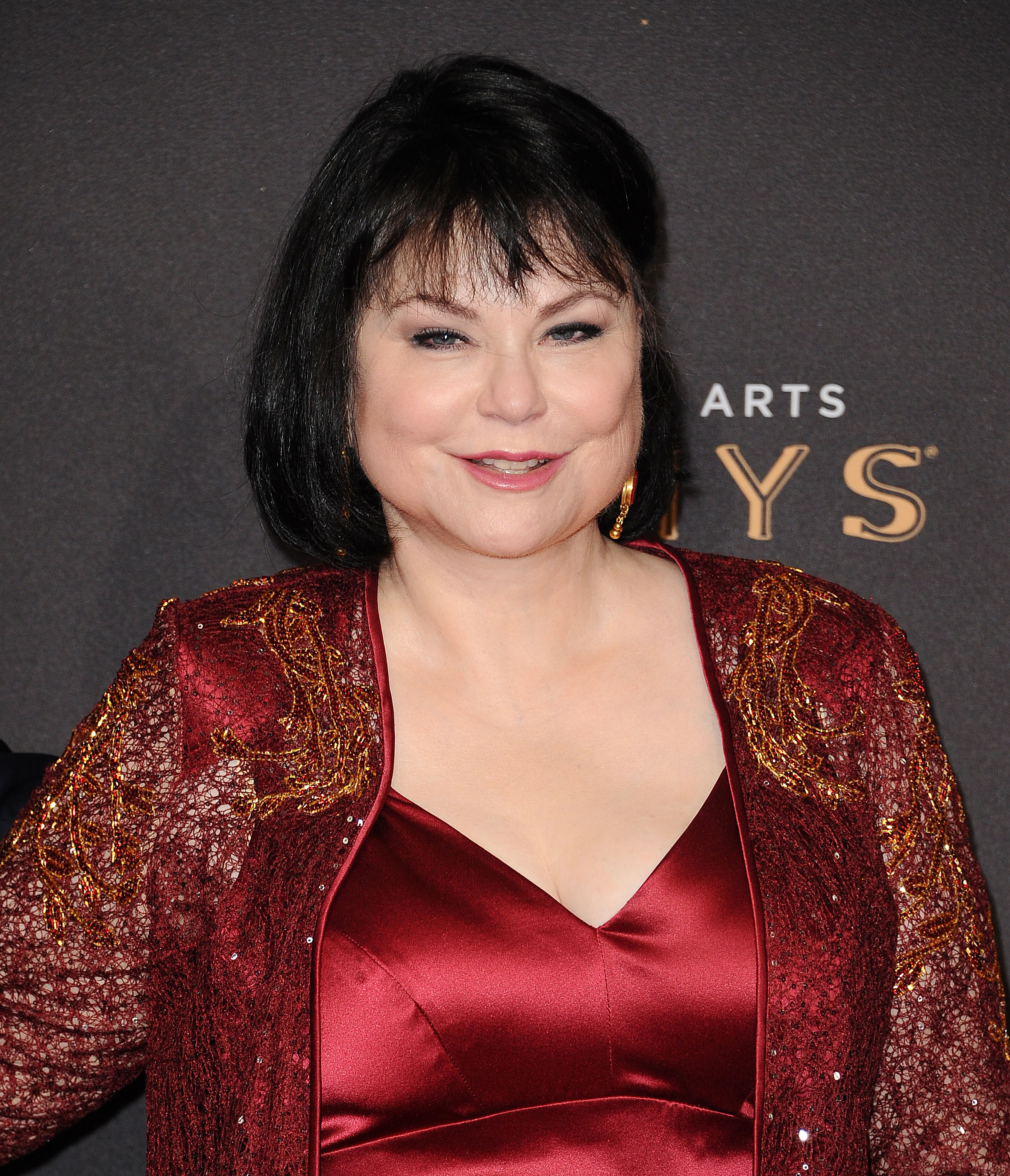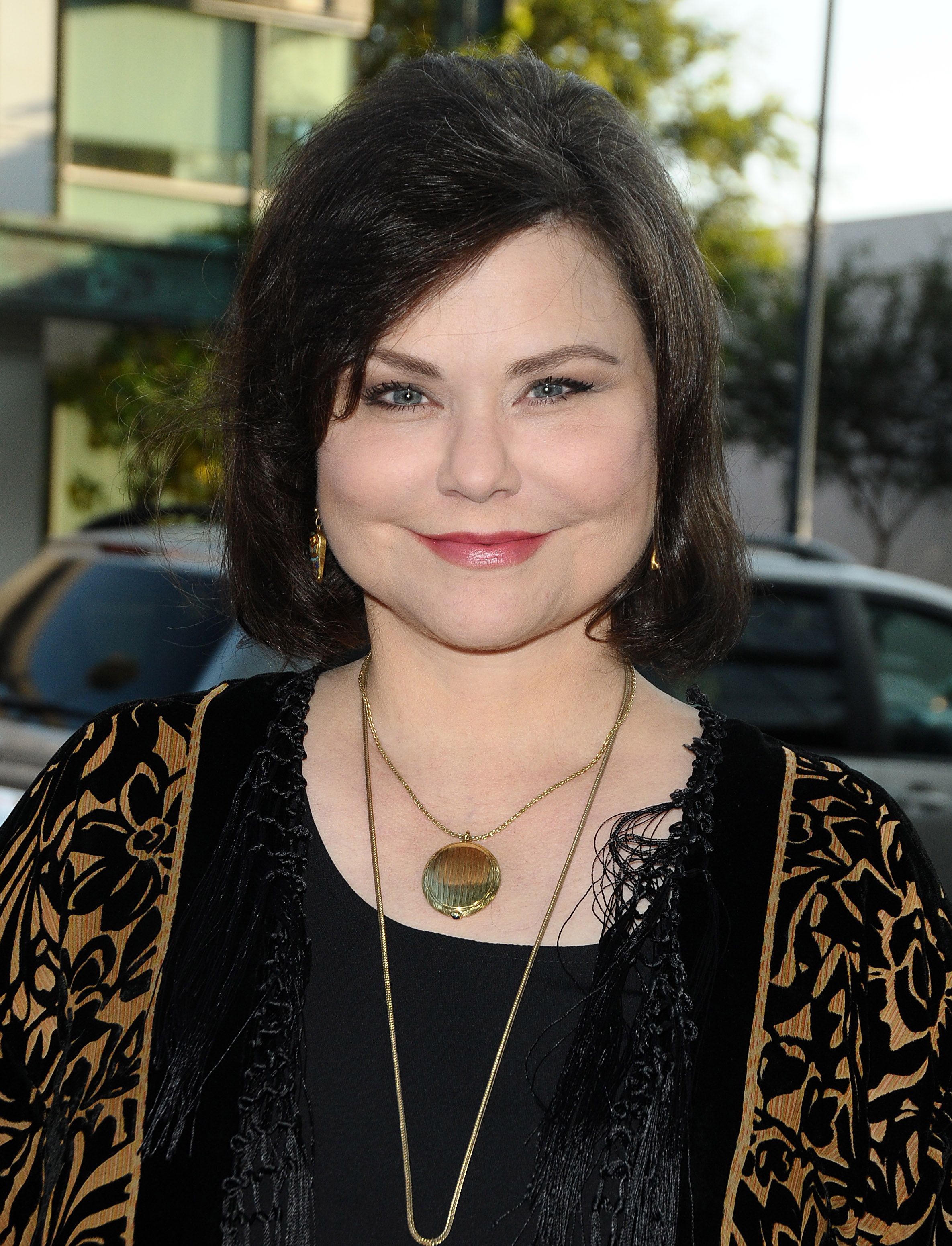In the late 1980s, this actress became a household name, charming viewers with her sharp humor and larger-than-life personality on one of television’s most popular sitcoms. But as her fame grew, so did behind-the-scenes tensions and public ridicule over her weight.
However, through it all, one constant remained: her husband’s steadfast love. While the world fixated on her struggles, he offered her strength and support, helping her rebuild her life away from the limelight.
The actress at the premiere of “Murder Me, Murder You” in 1983. | Source: Getty Images
A Promising Career Overshadowed by Public Scrutiny
In 1986, this actress landed the role of Suzanne Sugarbaker on the hit sitcom “Designing Women,” where her striking charisma and sharp comedic timing brought her fame and admiration.
The ’80s TV icon circa 1984. | Source: Getty Images
With her quick wit and undeniable charm, she won over audiences and seemed destined for a long, successful career. Yet, as the spotlight brightened, the pressures of Hollywood began to take a devastating toll on her mental health and self-esteem.
The famous actress and the cast of “Designing Women” circa 1987. | Source: Getty Images
Behind the scenes, the actress was struggling with depression, a battle she had faced since her teenage years. By the end of the show’s second season, the condition worsened, leading to periods where she would isolate herself completely.
“Basically, I would shut down and hole up,” she later revealed. “I wouldn’t want to leave the apartment until I came out of this dark place. It was very debilitating.”
The “Designing Women” star and her castmates filming the popular series in 1987. | Source: Getty Images
Her co-star and close friend Dixie Carter would lay beside her and reassure her during these moments, offering much-needed comfort.
The actress as Suzanne Sugarbaker in “Designing Women” circa 1987. | Source: Getty Images
Despite these personal battles, the actress pushed forward in her role, but her weight gain soon became a target of relentless media scrutiny. As her figure changed, tabloids mocked her appearance with cruel nicknames like “Delta Bulk.”
The harsh coverage was emotionally devastating. “The tabloid machine tortured [her],” co-star Annie Potts later said. Reflecting on the public’s obsession with her body, the actress, a former Miss Florida, questioned why she was subjected to such ridicule.
The famous actress on the set of “Where the Hell’s That Gold?” in 1988. | Source: Getty Images
“I didn’t do anything to deserve this. Why are they so cruel?” she asked. She compared her struggles to those faced by icons like Elizabeth Taylor, noting that many women in Hollywood were harshly judged for gaining weight.
The star’s depression and public humiliation drove her to food for solace. “When I would be depressed in L.A., it would be, ‘Let’s just have one Stouffer’s macaroni and cheese after another,'” she admitted.
The ’80s TV icon circa 1989. | Source: Getty Images
At one point the actress asked to be released from her contract, physically and mentally exhausted. “I wanted to leave, and I wasn’t allowed to leave,” she stated. Showrunners pushed to have her come back to the series.
The star filming “Designing Women” in 1990. | Source: Getty Images
Instead, a concerned friend admitted her to a hospital. “The nurse said I looked like a wounded animal. I didn’t really want to exist. I remember they weighed me and I was 170 pounds, and I wanted to die,” she revealed.
The Hollywood star filming “”Designing Women” circa 1990. | Source: Getty Images
Amid these challenges, things were looking up for a moment. Not wanting to add fuel to the fire, according to reports, the actress “backed off” once reports about her weight emerged.
Instead, she turned to the show’s creator, Linda Bloodworth-Thomason, with a bold idea — to address her weight gain in an episode of “Designing Women.”
The result was the groundbreaking storyline “They Shoot Fat Women, Don’t They,” where her character grapples with body image issues.
The “Designing Women” star at the 5th Annual American Cinematheque Award Honoring Ron Howard in 1990. | Source: Getty Images
The episode was a critical success, earning the actress a standing ovation from the studio audience and her first Emmy nomination. It was later revealed that Bloodworth-Thomason’s husband cried while reading the script.
Despite this success, the tensions behind the scenes continued to mount, and in 1991, the actress was let go from the show. The impact of her dismissal was profound.
The Hollywood star at the taping of Bob Hope’s TV Special “Bob Hope’s Yellow Ribbon Party” in 1991. Source: Getty Images
Feeling rejected by Hollywood and abandoned by an industry she had poured her heart into, she retreated from the limelight. She and her husband sold their home in Pasadena in 1995 and moved to New Orleans for a fresh start.
The famous actress, circa 1995. | Source: Getty Images
The actress photographed at the Mark Hotel in New York in 1995. | Source: Getty Images
But challenges persisted. In 1997, she experienced a particularly dark year. She mourned the loss of her grandmother and a beloved pet while supporting her mother, who was battling breast cancer.
The actress spotted at Los Angeles International Airport in 1996. | Source: Getty Images
Years later, the former Hollywood star opened up about how she once turned to crystal meth as a weight loss method. She started off taking prescribed pills while attending drama school in London.
The ’80s TV icon at the launch of her clothing line in New York in 1998. | Source: Getty Images
However, once she returned to the U.S. and learned that the pills were illegal, the actress found someone on a set to get them for her. Eventually, she built a tolerance to the pills and was offered crystal meth instead to manage her weight.
The actress at the 46th Annual Genii Awards in 2001 in Beverly Hills, California. | Source: Getty Images
“Nobody knew about crystal meth at the time,” she said during a podcast appearance in 2024. She would ingest the substance before work and wouldn’t eat for days. Fortunately, the actress saw brighter days after meeting her husband.
The actress photographed on February 15, 2005, in New York. | Source: Getty Images
Burke’s life took a fateful turn in 1987 when she met Gerald McRaney, an accomplished actor cast as her character Suzanne’s ex-husband, Dash Goff, on “Designing Women.”
Delta Burke as Suzanne Sugarbaker and Gerald McRaney as Dash Goff in “Designing Women” in 1989. | Source: Getty Images
Their on-screen chemistry soon translated into a real-life romance, with McRaney making his intentions clear early on. “He asked me to marry him on the second date, so we were pretty committed!” Burke recalled with a laugh.
Delta Burke and Gerald McRaney at the 39th Annual Primetime Emmy Awards in 1987. | Source: Getty Images
Delta Burke and Gerald McRaney at a party in West Hollywood, circa 1987. | Source: Getty Images
The couple married in 1989 in a lavish ceremony attended by Burke’s co-stars and 500 other guests, with the bride weighing 170 pounds on her wedding day. From the beginning, McRaney proved to be a pillar of strength and unconditional love in Burke’s life.
Delta Burke and Gerald McRaney, circa 2000. | Source: Getty Images
McRaney offered his own perspective on their relationship. “[…] If what you want is a trophy wife, then be happy with how empty and vacuous that’ll turn out to be,” he said. “But if what you want is a wife, then you love that person. Period.”
Gerald McRaney and Delta Burke at the afterparty for the opening night of the Broadway musical “Wonderful Town” on November 23, 2003, in New York. | Source: Getty Images
Delta Burke and Gerald McRaney during the 50th Annual Drama Desk Awards in New York in 2005. | Source: Getty Images
In a desperate call, she reached out to McRaney. “I didn’t know where I was, but he found me,” she said. As Burke rebuilt her life, her husband stood by her side, offering love and encouragement through every challenge.
Gerald McRaney and Delta Burke at the premiere of “Get Low” on July 27, 2010, in Beverly Hills, California. | Source: Getty Images

Delta Burke attends the 2020 Hollywood Show held at Marriott Burbank Airport Hotel on February 1, 2020, in Burbank, California. | Source: Getty Images
Gerald McRaney and Delta Burke at the 2017 Creative Arts Emmy Award on September 10 in Los Angeles, California. | Source: Getty Images

Delta Burke attends the Creative Arts Emmy Awards at Microsoft Theater on September 10, 2017, in Los Angeles, California | Source: Getty Images
“As a man, I’ve had the love of the finest woman I can possibly imagine,” he said. “At the end of a day’s work, I get to come home to her — that’s the fun.”
Gerald McRaney and Delta Burke sharing a kiss at the 2017 Creative Arts Emmy Award on September 10 in Los Angeles, California. | Source: Getty Images

Delta Burke attends the Television Academy’s Performers Peer Group Celebration on August 21, 2017, in Beverly Hills, California. | Source: Getty Images
While Burke stepped away from Hollywood, she found joy and fulfillment in her personal life. “I love my life truly for the first time,” she said. “And I love him desperately.”

Delta Burke arrives at AFI Associates & Sony Pictures Classics’ premiere of “Get Low” on July 27, 2010, in Beverly Hills, California. | Source: Getty Images

Delta Burke attends the premiere of “Get Low” at the Academy of Motion Picture Arts and Sciences on July 27, 2010, in Beverly Hills, California. | Source: Getty Images
Over the years, she’s built an impressive résumé with roles in popular shows like “Drop Dead Diva,” “Bridal Fever,” “The Wedding Bells,” “Boston Legal,” and “Counter Culture,” among others. Beyond acting, Burke has also ventured behind the scenes, earning producing credits—a testament to her multifaceted career in the entertainment industry.
Gerald McRaney and Delta Burke at the 2020 Hollywood Show on February 1, 2020, in Burbank, California. | Source: Getty Images
Delta Burke’s journey from fame to personal struggles and back to a place of stability showcases remarkable resilience. Through relentless scrutiny and health challenges, her husband remained her unwavering support.
If you or someone you know is considering suicide, please contact the National Suicide Prevention Lifeline at 1-800-273-TALK (8255), text “help” to the Crisis Text Line at 741-741, or go to suicidepreventionlifeline.org.
